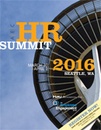 To get the latest and greatest advice on coaching and mentoring employees in today's architecture or engineering firm, we recently sat down with Bob Kelleher, President & CEO of Employee Engagement Group.
To get the latest and greatest advice on coaching and mentoring employees in today's architecture or engineering firm, we recently sat down with Bob Kelleher, President & CEO of Employee Engagement Group.
Here’s what he had to say:
What are the best questions you can ask as a “good coach” to your employees?
When you’re coaching your employees to high performance, I’m a fan of asking open-ended questions, such as “what?”, “how?”, or “when?” which can allow your employees to expand on their own thoughts. I’m also a big fan of process improvement and innovation—the more you can ask your employees how would they do something, or have they thought of some alternative approaches, or--in the best case scenario, how would they proceed—the better. Staff development is about challenging an employee to think and be more bold and to think outside of the mundane.
What are your top three tips for bringing out the best in your employees?
I think it’s so key to put the people in the right job where they can excel. I believe the mistake we often make—especially in the A/E industry—is we’ll put, for example, a technical person in a sales role. The more you put people in jobs they’re either uncomfortable in or not good at, the more stress points there will be. Second, you need to remove obstacles that keep employees from getting things done—such as outdated technology, etc. Third, I’m a huge fan of empowering your employees to excel.
If you’re a project manager or firm leader, what are the best ways to initiate and maintain a healthy mentor/mentee relationship?
Let me share my bias: former mentor programs do not work. The best mentor programs organizationally are those that are informal, not those that are forced on you by the organization. When you introduce overly formal mentor relationships, you introduce stress and conflict between the mentor and the boss. It also gives the manager an excuse not to manage. I think the role of line manager—the boss—is a critical role; it determines employees’ levels of engagement and disengagement. The goal is to have protégés and mentors within an organization where it is safe to seek and offer guidance and help—those are rich and successful cultures.
What’s the worst thing you can do when coaching, mentoring, or managing?
Micromanage is number one. Make promises you can’t keep is the second—you risk losing the trust of your employee. Trust is like money: it’s difficult to obtain and really easy to lose! Also, it’s important to be transparent in your coaching—let people know their deficiencies and strengths … be genuine, be available, be open, honest, and transparent.
Bob Kelleher is an award winning author, thought leader, keynote speaker and consultant, and travels the globe sharing his insights on employee engagement, leadership, and workforce trends. Bob is the author of Amazon’s #1 selling employee engagement book for 2011, Louder than Words:10 Practical Employee Engagement Steps That Drive Results and the just released Creativeship, A Novel for Evolving Leaders.
 Focused specifically on the A/E/C space, PSMJ and The Employee Engagement Group are hosting our 7th Annual HR Summit on March 31st and April 1st in Seattle. This is the place to learn, network, and engage with hundreds of A/E/C HR professionals and firm leaders just like you.
Focused specifically on the A/E/C space, PSMJ and The Employee Engagement Group are hosting our 7th Annual HR Summit on March 31st and April 1st in Seattle. This is the place to learn, network, and engage with hundreds of A/E/C HR professionals and firm leaders just like you.
Refuting Three Common Manager Complaints
8 Links That Will Make You a Better HR Professional
How to Turn Employees Into Firm Advocates on LinkedIn
Five Steps to Successful Employee Orientations
Are Your Employees Engaged, Or Just Satisfied?



